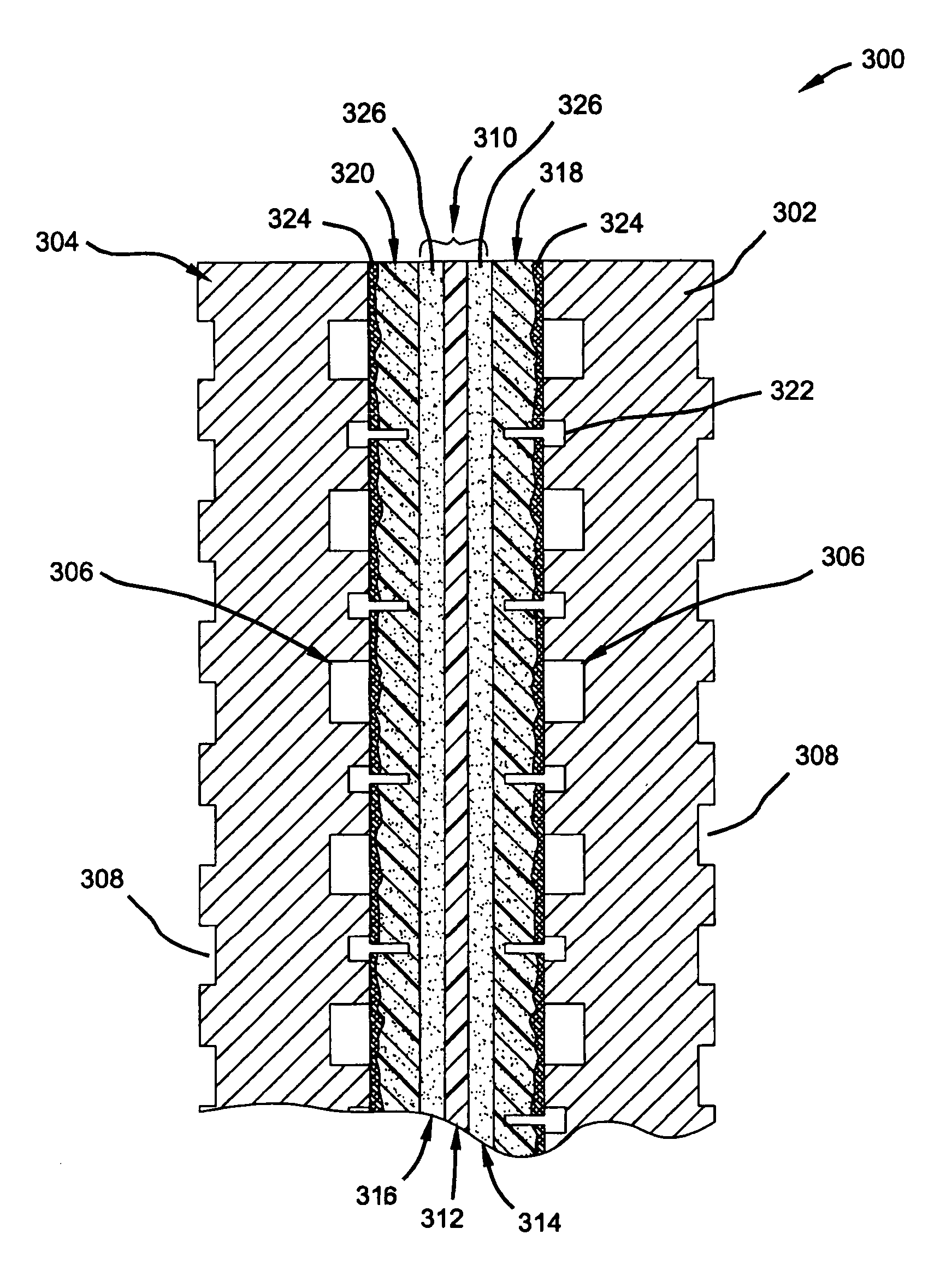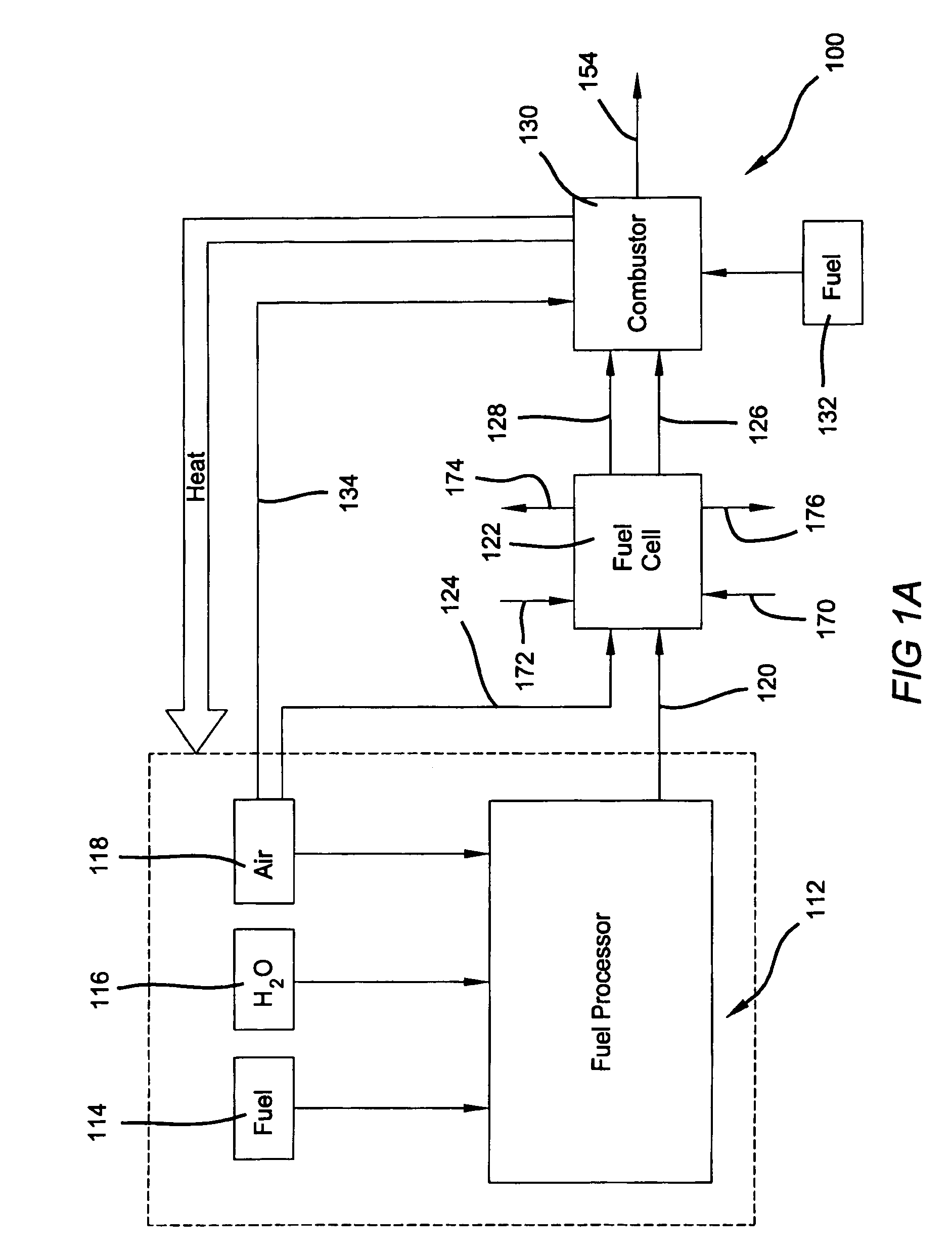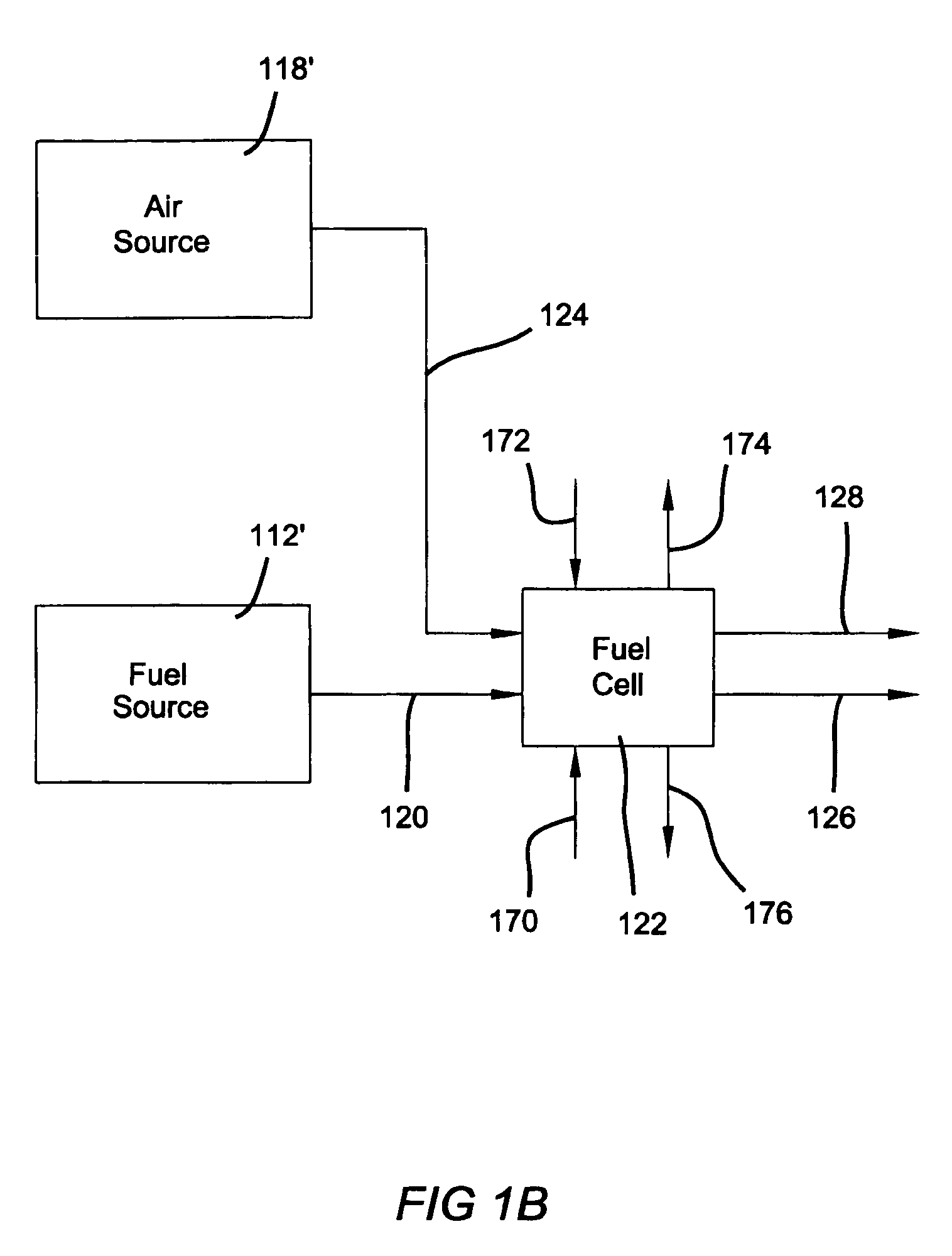Balanced humidification in fuel cell proton exchange membranes
a fuel cell and proton exchange membrane technology, applied in the direction of fuel cell details, cell components, electrochemical generators, etc., can solve the problems of membrane hydration, diminishing the “acidic” character, and reducing the desired electrochemical reaction of the cell, so as to maximize the efficiency of fuel cell operation and minimize the cross-sectional area , the effect of optimizing the moisture distribution
- Summary
- Abstract
- Description
- Claims
- Application Information
AI Technical Summary
Benefits of technology
Problems solved by technology
Method used
Image
Examples
Embodiment Construction
provided hereinafter. It should be understood that the detailed description and specific examples, while indicating the preferred embodiment of the invention, are intended for purposes of illustration only and are not intended to limit the scope of the invention.
BRIEF DESCRIPTION OF THE DRAWINGS
[0016]The present invention will become more fully understood from the detailed description and the accompanying drawings, wherein:
[0017]FIG. 1A shows a reformer-based fuel cell power system with water addition to the fuel cell stack of the power system;
[0018]FIG. 1B shows a hydrogen storage-based fuel cell power system with water addition to the fuel cell stack of the power system;
[0019]FIG. 2 shows detail in a portion of a PEM fuel cell stack within the fuel cell stack assembly of the fuel cell power system of FIGS. 1A and 1B;
[0020]FIG. 3 shows detail in a cross-section of fuel cell having a hydrophobic layer and subsequent hydrophilic layer;
[0021]FIG. 4 shows detail of a capillary element ...
PUM
| Property | Measurement | Unit |
|---|---|---|
| active area | aaaaa | aaaaa |
| area | aaaaa | aaaaa |
| hydrophobic | aaaaa | aaaaa |
Abstract
Description
Claims
Application Information
 Login to View More
Login to View More - R&D
- Intellectual Property
- Life Sciences
- Materials
- Tech Scout
- Unparalleled Data Quality
- Higher Quality Content
- 60% Fewer Hallucinations
Browse by: Latest US Patents, China's latest patents, Technical Efficacy Thesaurus, Application Domain, Technology Topic, Popular Technical Reports.
© 2025 PatSnap. All rights reserved.Legal|Privacy policy|Modern Slavery Act Transparency Statement|Sitemap|About US| Contact US: help@patsnap.com



